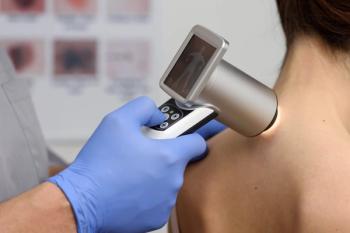
Demand for e-visits grows but uptake still sluggish
Earlier this year Susan Andrews, MD, evaluated a broken arm for a long-time patient in her family practice. Without leaving her Memphis office, Dr. Andrews conducted a complete history, assessed the injury and arranged a referral to an orthopedist, even though the patient was actually 2,000 miles away vacationing in the Caribbean.
Dr. Andrews was able to complete-and bill the patient for-this e-visit thanks to a practice portal system. With the system, patients move through an interactive profile that elicits structured information and permits physicians to make a diagnosis and treatment decision online, or ask the patient to come in for a face-to-face visit if they spot a red flag.
Dr. Andrews says she has actively promoted the technology since installing it in January 2006 as part of TransforMED, a pilot program sponsored by the American Academy of Family Physicians. Many patients regularly use it to renew prescriptions, request appointments and fill out histories before office visits.
Most of Dr. Andrews' e-visits have been for acute but minor problems like sinus and ear infections that patients didn't want to take time off of work to treat. Only about 10% have been for chronic conditions, where Dr. Andrews believes the technology has great potential. Online access helps take care of people who have blood pressure out of control, diabetes out of control, or congestive heart failure, for example.
Allen Wenner, MD, who has developed patient interview software for e-visit vendors, estimates that 20% or more of medical services could be delivered electronically, greatly increasing efficiency and reducing cost.
"Patients with controlled hypertension could easily be 80% instead of 35%," he says. "If you believe that would reduce the number of people with heart attacks and strokes, you have to believe it will reduce costs, too."
For insurers and risk-bearing networks, though, a new service like e-visits raises questions. How is the service defined? Does, say, an e-mail with blood sugar levels followed by a medication adjustment qualify, or should more be required? Will e-visits replace other evaluation and management services, or will they become an extra service patients consume on their way to an office or emergency room visit? And can e-visits really deliver efficient, high-quality care?
The answer to the last question is an emphatic yes, Dr. Wenner says. He diagnosed his last two cases of appendicitis online based on history alone, and was able to send the patients directly to the hospital for treatment without unnecessary delays for tests. "A good history is 90% of diagnosis. The physical exam often just confirms it," he says.
Structuring incoming patient information also promotes efficiency, Dr. Wenner says. With relevant history in hand, an experienced physician often can make a diagnosis in less than a minute, compared with the five to 10 minutes it might take interviewing the patient. Family physician Amy Mullins, MD, of three-doctor Trinity Clinic, Whitehouse, Texas, estimates e-visits take her about five minutes, compared with 15 to 20 minutes for comparable office encounters.
Medfusion CEO Steve Malik says that of nearly half a million e-visits his IT company has processed for about 2,500 physicians over the last three years, more than 85% have been resolved online.
Large insurers around the country, including UnitedHealthcare and CIGNA, are conducting pilot tests of e-visits and a few regional plans are reimbursing for them, Malik says. Capitated systems in particular benefit, Dr. Wenner says. Several large systems encourage chronic patients to check in via e-visit once or twice a month.
Howard Larkin is an Illinois-based freelance writer.
Newsletter
Get the latest industry news, event updates, and more from Managed healthcare Executive.






















































